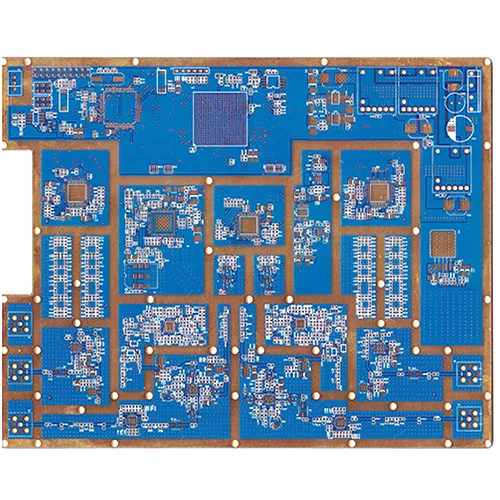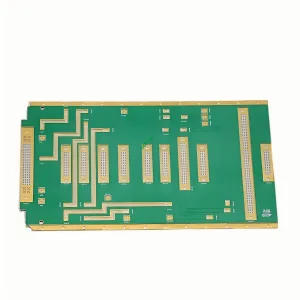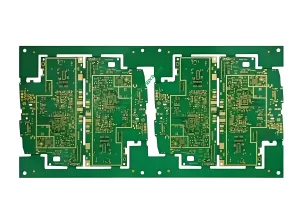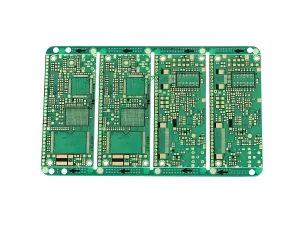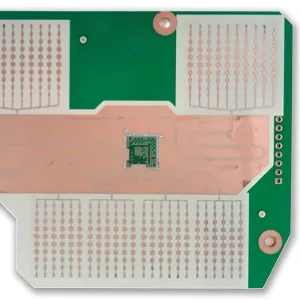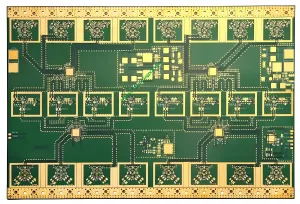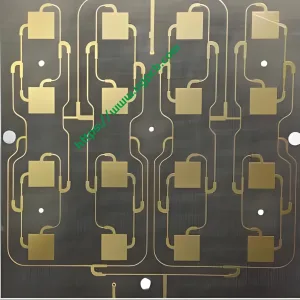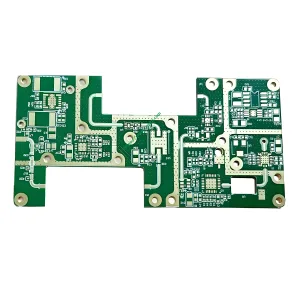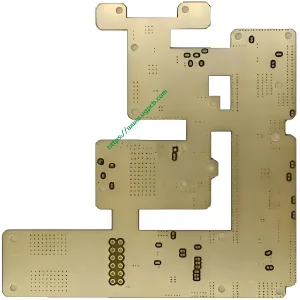Applications of High Frequency Mixing Board
High frequency mixing boards are used in various applications such as:
- Satellite receivers
- Base station antennas
- Microwave transmission
- Car phones
- Global positioning systems
- Satellite communications
- Communication equipment connectors, receivers, signal oscillators
- Home appliance networking
- High-speed running computers
- Oscilloscopes
- IC testing instruments
They are essential for high-frequency communications in fields like medium-frequency communication, high-speed transmission, high confidentiality, high transmission quality, and high storage capacity processing.
Microwave High-Frequency Hybrid PCB Stacking Method and Characteristics
Structure and Material Composition
- Controlled Depth Composite Laminate Structure:
- The high-frequency hybrid PCB includes:
- L1 copper layer (high frequency sheet)
- Couche de cuivre L2 (Feuille PP)
- Couche de cuivre L3 (substrat en résine époxy)
- L4 copper layer
- Slot holes of the same size are set in the same position of L2, L3, L4 copper layers.
- L4 copper layer is arranged with three-in-one buffer material from inside to outside, steel plate, and kraft paper stacked from outside to outside in turn.
- Aluminum plate, steel plate, Kraft paper is stacked on the L1 copper layer from inside to outside.
- The high-frequency hybrid PCB includes:
Three-in-One Buffer Material
- Buffer Material Description:
- The three-in-one buffer material is a buffer material sandwiched between two release films.
Polytetrafluoroethylene Plate as High-Frequency Sheet
- Plate Material Characteristic:
- The high-frequency sheet is a polytetrafluoroethylene plate.
Expansion and Contraction Characteristics and Processing Method
The expansion and contraction characteristics of high-frequency hybrid PCB composite laminates differ from ordinary epoxy resin substrates, leading to difficulties in controlling board curvature and shrinkage. The processing method of first slotting and then pressing can cause sheet metal dent problems.
- The three-in-one buffer material is arranged on one side of the groove, filling the groove hole during pressing to avoid depression.
- Kraft paper is set on both sides of the cardboard to buffer pressure and balance heat transfer evenly.
- Steel plates ensure uniform heat conduction during pressing, resulting in a flat press and balanced heat and pressure during the pressing process, thereby better controlling the curvature and expansion of the board.
The Rise of 5G Communication Technology and Microwave High-Frequency Hybrid PCB Manufacturing
Avec le développement rapide de la technologie de communication 5G, higher frequency requirements for communication equipment are necessary. Various microwave high-frequency hybrid PCBs are available on the market, placing higher demands on their manufacturing technology.
Professional processing companies with more than 10 years of experience in iPCB can provide multi-layer hybrid PCB manufacturing services. They possess all the required equipment for the entire production process, adhering to the ISO9001-2000 international standardized management system and passing iatf16949 and ISO 14001 system certifications. Their products are UL certified and comply with IPC-A-600G and IPC-6012A standards, offering high-quality, high-stability, high-adaptability microwave high-frequency hybrid PCB samples and batch services.
 LOGO UGPCB
LOGO UGPCB

